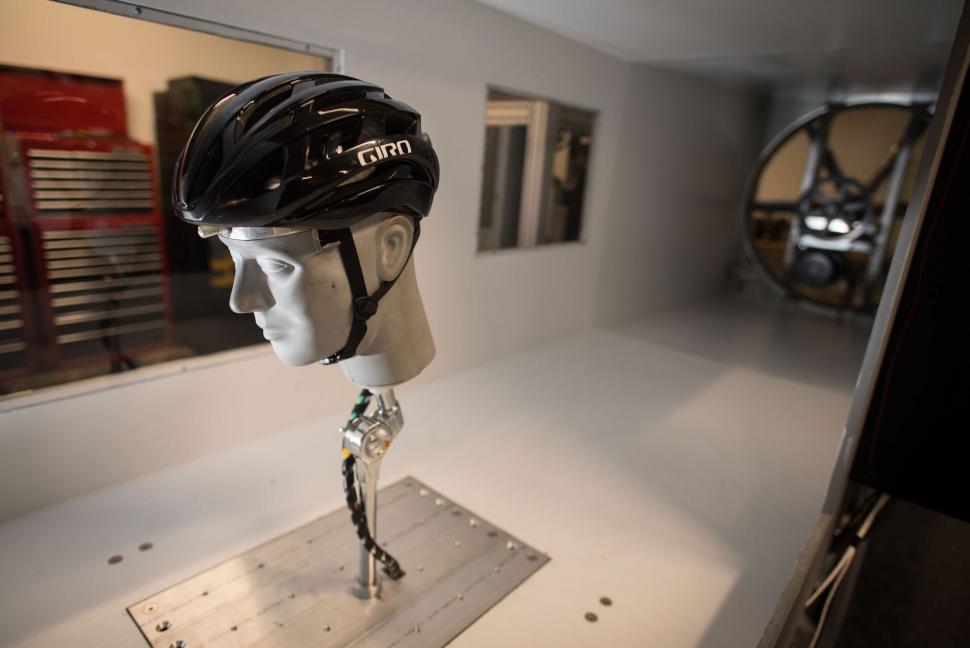- News
- Reviews
- Bikes
- Components
- Bar tape & grips
- Bottom brackets
- Brake & gear cables
- Brake & STI levers
- Brake pads & spares
- Brakes
- Cassettes & freewheels
- Chains
- Chainsets & chainrings
- Derailleurs - front
- Derailleurs - rear
- Forks
- Gear levers & shifters
- Groupsets
- Handlebars & extensions
- Headsets
- Hubs
- Inner tubes
- Pedals
- Quick releases & skewers
- Saddles
- Seatposts
- Stems
- Wheels
- Tyres
- Tubeless valves
- Accessories
- Accessories - misc
- Computer mounts
- Bags
- Bar ends
- Bike bags & cases
- Bottle cages
- Bottles
- Cameras
- Car racks
- Child seats
- Computers
- Glasses
- GPS units
- Helmets
- Lights - front
- Lights - rear
- Lights - sets
- Locks
- Mirrors
- Mudguards
- Racks
- Pumps & CO2 inflators
- Puncture kits
- Reflectives
- Smart watches
- Stands and racks
- Trailers
- Clothing
- Health, fitness and nutrition
- Tools and workshop
- Miscellaneous
- Buyers Guides
- Features
- Forum
- Recommends
- Podcast
TECH NEWS
 2021 Giro Helios Spherical cycling helmet - worn side
2021 Giro Helios Spherical cycling helmet - worn sideGiro launches Helios Spherical helmet
Giro has introduced a new high-end Helios Spherical helmet for road and gravel use that features MIPS Spherical technology – a ‘ball-and-socket’ design with two separate liners intended to help manage impact forces. The Helios is lightweight, especially for a MIPS helmet, and low profile.
If you need to get up to date on MIPS (Multi-directional Impact Protection System), find out all you need to know here. In short, MIPS is a low friction layer that allows relative movement between the outer section of the helmet and the head in all directions, the idea being to to reduce rotational motion transferred to the brain in the event of an impact.
Most MIPS helmets feature a plastic liner, usually yellow, that sits between the EPS (expanded polystyrene) foam and your head. With MIPS Spherical technology, though – first introduced on the Giro Aether helmet a couple of years ago – you instead get two separate EPS layers with the outer one able to rotate around the inner one if you crash.
Find out more about MIPS Spherical Technology here.
“By integrating the MIPS slip plane and elastomeric anchors between the two Nanobead EPS foam liners, the interior of the helmet can be aggressively channelled to enhance airflow and cooling power, and is free of excess plastic or snag points that can compromise ventilation and sweat management, create pressure or snag points that pull hair,” says Giro.
“And because Spherical technology uses two separate foam liners, the density of each layer can be optimised… to address the varying characteristics of high- and low-speed impacts.”
The Helios Spherical’s exterior polycarbonate shell is In-molded, meaning that it is permanently fused with the EPS foam liner, wrapping to the interior edges with the aim of increasing durability.
Cooling comes from 15 vents, including a large central vent that looks like it’ll direct plenty of air inside. What Giro calls its Wind Tunnel internal channelling is designed to maximise airflow through the helmet.
Giro says that the Helios Spherical has a cooling efficiency rating that’s very slightly behind that of the Aether, its leading helmet in this respect.
“The difference may be perceptible to some riders in certain conditions, but it is not a substantial difference or likely to affect a rider’s experience or performance,” says Giro.
The gap in terms of temperature regulation is only just beyond the point that is perceptible in use, according to Giro’s testing.
While we’re talking about testing, Giro also says that its wind tunnel analysis shows that the Helios Spherical sits behind the Aether and Synthe in terms of aero efficiency, but not by a long way.
“Although not designed to be an aero helmet, the Helios does perform well in this area and could be a good option for riders that value aerodynamic efficiency,” says Giro.
Ionic+ antimicrobial interior padding is intended to manage sweat and fight bacteria. One pad extends across the width of your forehead to help stop sweat dripping into your eyes.
Fit is handled by Giro’s Roc Loc 5 Air system, which we’ve used plenty of times before. It’s an excellent design that gives you height adjustment as well as a clicky wheel at the back to fine-tune tightness.
Giro claims a weight of 250g (size medium) for the Helios Spherical.
Most high-end road helmets are designed for racing, or they’re at least race-inspired, but Giro has gone down a completely different route here. The Helios Spherical is intended to be understated (the black, white and red version in some of our pictures is the loudest option). It’s interesting that more companies are recognising the appeal higher end products for the road that aren’t designed for racing and don’t have that performance aesthetic to them – think of the recently released Specialized Aethos bike, for example, that’s never going to be raced (it’s well under the UCI’s minimum weight limit for racing).
The Giro Helios is priced £229 and it’s officially available from today, although shipments to the UK have been delayed. We’re told that it’ll be out there in the wild in this country from early December.
A sample has just arrived here at road.cc, so we’ll be running a review shortly.
Get more info over at www.giro.co.uk.
Mat has been in cycling media since 1996, on titles including BikeRadar, Total Bike, Total Mountain Bike, What Mountain Bike and Mountain Biking UK, and he has been editor of 220 Triathlon and Cycling Plus. Mat has been road.cc technical editor for over a decade, testing bikes, fettling the latest kit, and trying out the most up-to-the-minute clothing. He has won his category in Ironman UK 70.3 and finished on the podium in both marathons he has run. Mat is a Cambridge graduate who did a post-grad in magazine journalism, and he is a winner of the Cycling Media Award for Specialist Online Writer. Now over 50, he's riding road and gravel bikes most days for fun and fitness rather than training for competitions.













They are buses, not trains. They don't travel at 186mph or take over 2 miles to stop under braking. It should be inherently no more dangerous...
I'd go for 'the sun was in my eyes' as a defence, get away with murder with that one...
I have two aero bikes- an Argon18 Nitrogen and an Orro Venturi. I love the way they feel on the road. I also like the style of the deeper section...
I wonder if you could use a Northwave shoe (w/Speedplay drilling) on the Ekoi pedal. Possibly using one Look pattern cleat hole and two Speedplay...
They have here: results at 14.40. The aero bike was roughly fifteen seconds faster than a climbing bike on a descent of around 6 km, so about 3km/h...
As I've also placed here the nutter Audi and white van drivers, I've decided to give those no-nonsense keep-the-country-moving BMW drivers a list...
100% this. Policing mentality is formed by social 'norms', and the cyclist witchhunting across social media is the UK norm. Close passing a person...
That's a clear 2 points awarded there, but I guess as there's now a 25% tariff you'll only get 1.5
Fawkes Cycles is only local if you live near Oldham. That's nearly 300 miles away from me. Also, any retailer that doesn't participate in an...
Openreach under fire over delays to Amesbury cabinet repairs...